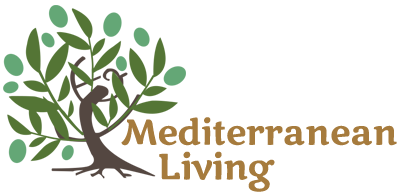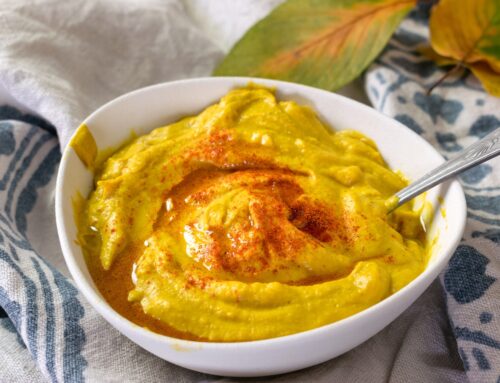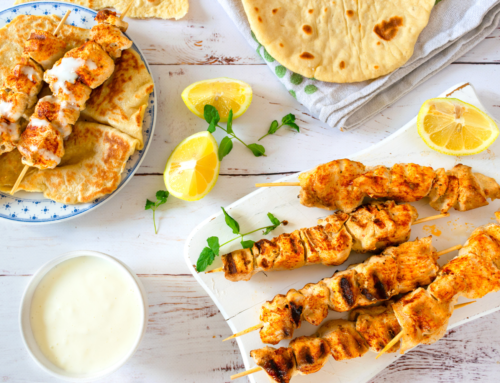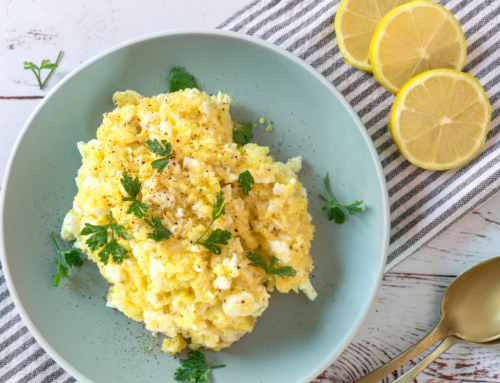Cayenne Pepper: The Anti-inflammatory and Heart Healthy Spice
By Christine Kenneally
Updated October 21, 2021
Cayenne pepper not only heats up any Mediterranean Diet recipe, but it also will spice up your health. Cayenne’s Latin name is capsicum annuum, which translates to “to bite”. If you’ve ever tasted cayenne, chances are you have experienced this bite.
All peppers are rated according to the Scoville rating system. Measuring the amount of capsaicin (the heat ingredient!) that they contain. Cayenne boasts between 30,000-50,000 units, while jalapenos contain a mere 2,000- 8,000 units. The hotter the pepper, the greater the health benefits. This fiery pepper, native to South America and the West Indies, has become widely used in cuisines around the world. It’s cherished for the spicy hot flavor as well as its vast healing properties.
Studies have shown that cayenne strengthens the heart and the circulatory system. If you want to get your blood flowing, eat cayenne. Circulation is so important for overall health, and many people suffer from problems associated with poor circulation: hypertension, hardening of the arteries and varicose veins, or cold hands and feet. Because it improves circulation so well, cayenne may be one of the most essential herbs we can eat. When cayenne clears blockages in circulation, the other herbs, food and medicine we eat can access areas of injury and illness, and work more effectively.
Clinical studies conducted with cayenne pepper and ginkgo biloba have revealed that ginkgo is 75% more effective when used with cayenne due to cayenne’s ability to improve circulation. This attribute makes cayenne pepper especially useful for individuals with poor circulation, and suggests that cayenne can help fight diseases of the circulatory system. In addition to improving circulation, cayenne is an effective treatment for cold and flu symptoms. It aids in breaking up and moving congested mucus, which means your sickness has to move along and leave the body as well.
Cayenne can also help with pain and inflammation in joints and muscles. Capsaicin as a topical agent has been well studied for its ability to improve blood flow resulting in the healing of muscle and joint pain, and even damaged tissue. Increased blood flow provides a source of healing nutrients to the tissue. Many people use skin creams containing capsaicin to treat sore muscles as well as areas of poor circulation. But why not simply use cayenne instead? You can make a poultice with cayenne and apply it directly to the skin, as long as the skin is not broken.
If you’re not someone who likes hot and spicy foods, start with just a pinch of cayenne, added to soups, casseroles, stir fry, or any of your favorite dishes. Allow yourself to become accustomed to the heat level and then add a bit more over time. Even if you do like spicy foods, we suggest you start with just a pinch of cayenne, it is so potent that a little goes a long way! Here is a delicious recipe to try adding some spice to your diet!
Cayenne may not be for everyone: Do not use cayenne if you have an active gastric or duodenal ulcer, diverticulitis, or irritable bowel syndrome, or if you take blood thinners or the asthma drug theophylline. Take special care not to get cayenne in your eyes, or in an open wound, as it can cause severe irritation.
Sources:
Naturalnews.com
Livestrong.com
Healingdaily.com
Globalhealingcenter.com
Also, enjoy my recipe for Mediterranean Spiced Rice With Black Beans and Chickpeas.
This recipe includes cayenne and other Mediterranean spices.











Winter LeBlanc says:
Winter LeBlanc says:
Winter LeBlanc says: